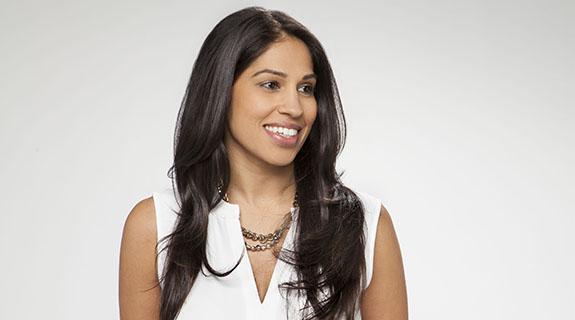When it comes to building brands, Troika’s Head of Strategy Smruti Shah straddles the line between research guru and creative developer, bringing a fresh business perspective to the brand consultancy and marketing innovations agency’s approach to client relationships.
Bridging the gap between research, understanding fans and creative execution, Shah, who joined the company in March, starts by understanding a client’s overarching position and goals, exploring what motivates that client’s brand by collaborating with Troika’s cultural anthropologist, Susan Kresnicka, and then interpreting it all with the creative team to come up with a campaign that’s fun and innovative, while also effective at driving business goals.
RELATED: Troika’s Susan Kresnicka: Entertaining Change Through Media Anthropology
The key to building such a brand strategy, she says, is to make sure the client is constantly along for the ride.
“I don’t believe in walking away from a client, doing everything on the back end, and then coming back to them,” she said. “It really is about taking in their input, having that conversation, building something and having them react and shape it.”
Throughout the process Shah is communicating with her clients, feeding them information to help them connect important elements and understand the path the campaign is taking as it organically unfolds.
“For me, it’s really about making sure we’re really collaborating, working back and forth,” she said.
RELATED: Smruti Shah Joins Troika as Head of Strategy
Before joining Troika, Shah served as the director of strategy at Interbrand, where she led cross-functional teams across a variety of categories, including media, consumer technology, retail, travel, financial services, industrials and not-for-profit. Her projects have spanned the globe, helping her fine tune brand messaging across different countries and cultures.
“You have to have a baseline that is always there,” she said. “You can’t just have completely different marketing approaches in different regions, or else you’re losing the equity of the brand. But you do have to really dig deep into understanding what are the nuances within different cultures, and kind of shoot off and create unique approaches to those regions. Because if you create a blanket approach, it’s never resonating with anybody.”
For instance, take auto insurance.
“I know it’s not a sexy category,” she said.
The brand’s value is that it can cover its clients anywhere, any way. In the U.S., the brand messaging may be that the company offers a wide range of coverage for many different scenarios, while in South Africa, it may be targeted more toward security and safety.
“It’s very different messaging and a way to market, but it all adds up to the same idea,” Shah said.
With that in mind, Shah stresses the need to create dynamic, flexible campaigns that can adapt across multiple platforms as consumers continually change how they interact with brands, and to always create strategies around what people want to experience and engage with.
“A lot of brands try to build around their own vision, versus what the consumer really cares about,” Shah said.
Yet in the midst of a rapidly changing media landscape, what the consumer really cares about is often a moving a target.
“There are three elements that really matter,” Shah said. “Technology is changing, the content itself is changing and the understanding of the audience is changing.”
While a successful campaign addresses all three areas, when it comes to content “everybody is doubling down … so it’s a hard space to win,” she said. Understanding the audience also is essential, but once the data is gathered and analyzed, it can be accomplished pretty quickly.
Technology, on the other hand, remains the golden ticket. Getting it right increases the ability to gather data, and allows networks to further dig into what drives their audience in order to understand and provide exactly what they care about and want as the television industry continues to evolve.
“I think the winners,” Shah said, “are going to be the ones who figure out the new technology of the world.”
Tags:











































__twocolumncontent.jpg)











